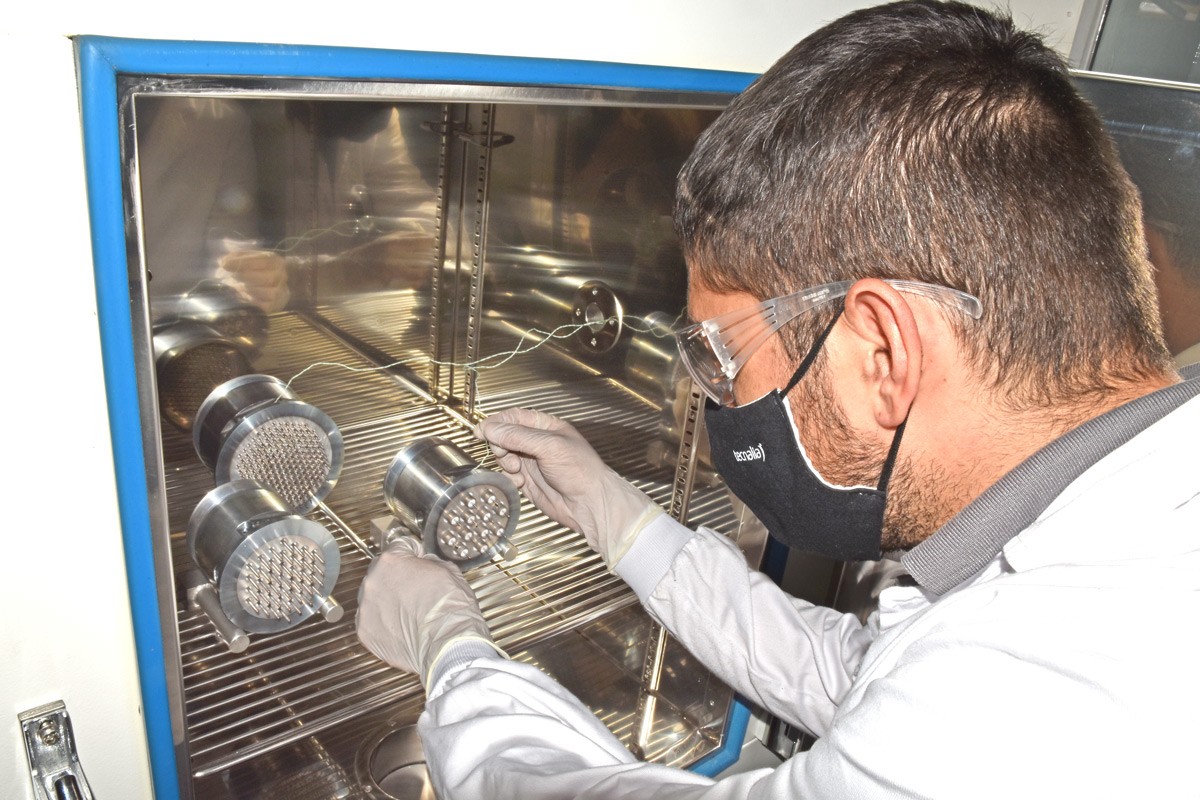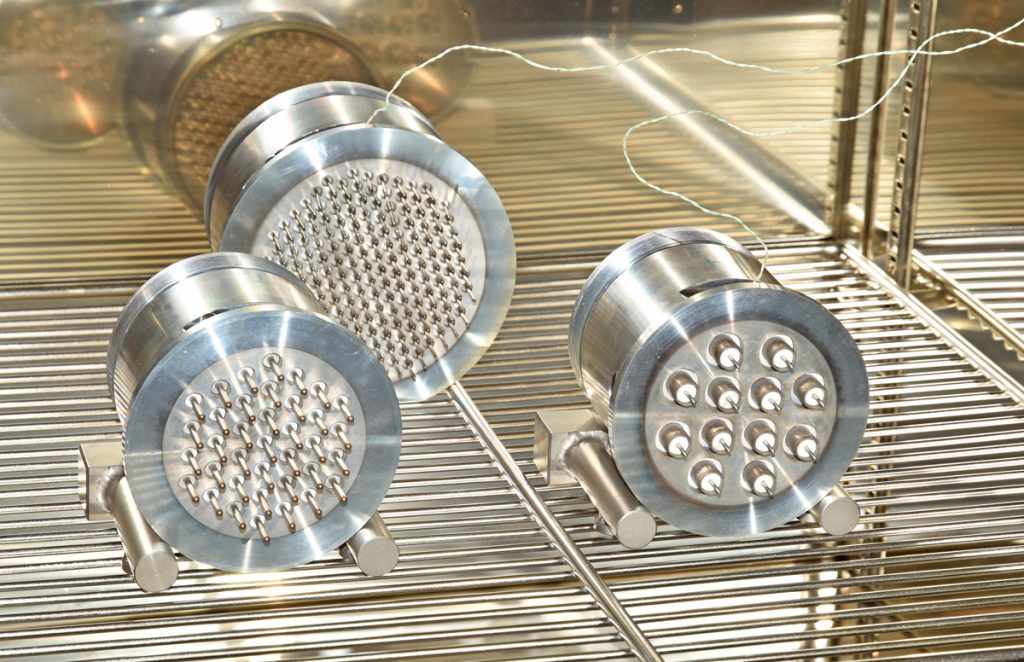How to carry the diagnostic signals from the ITER Vacuum Vessel outside

Feedthrough prototypes placed in an oven to simulate the thermal stress caused by 500 baking cycles which will last one month. The thin cables read the temperature inside the prototypes. F4E has signed a contract with IDOM for the development of the prototypes. The tests are performed by Tecnalia ©Tecnalia
Imagine trying to see what’s happening in the ITER vacuum vessel without being able to physically go in. In this hermitically-sealed chamber, the “eyes and ears” of the engineers are located between its walls monitoring the performance of the biggest fusion device with the help of various sensors. 3258 cables of 16 different variants in 27 ports of the machine. They will run from top to bottom in the 1 400 m3 vacuum vessel and the cryostat of the machine, and will be neatly packed in 80 feedthroughs procured by F4E. The number of cables inside varies from 9 to 200. It all depends on their size, the current and the number of diagnostic signals they need to transmit.

F4E is collaborating with IDOM for the final design of feedthroughs. The aim is to present the prototype later in the year at the Final Design Review. The tests performed so far suggest that Europe is on the right track. The prototype has performed well under normal conditions meeting the requirements of air tight, electrical and pressure tests to name few. Part of the feedthrough will be located in the vacuum vessel. Therefore, it needs to be extremely resilient and comply with nuclear safety standards. For this reason, engineers have decided to check how it responds to extreme conditions such as seismic events, a possible fire or an explosion. The feedthrough has already gone through thermal tests to assess how it copes with a baking cycle which consists of the following: from approximately 20 °C the equipment is warmed up to 240 °C and then cooled down to room temperature again. Tecnalia, collaborating with IDOM on this task, has carried out the test successfully repeating it 500 times.
“Although the materials for the production of feedthroughs are readily available in the market, there is always a degree of uncertainty when developing a prototype. The tests help us to understand if the equipment meets the ITER standards and how it performs under exceptional circumstances. In this case the results are extremely encouraging and the good collaboration with IDOM and Tecnalia has helped us to make a lot progress. We are ticking all requirement boxes for normal conditions and now going a step further” explains Miguel Perez Lasala, F4E Diagnostics Project Officer. The procurement of the European feedthroughs is expected to be launched during next year and the first delivery of the equipment is planned for mid-2023.